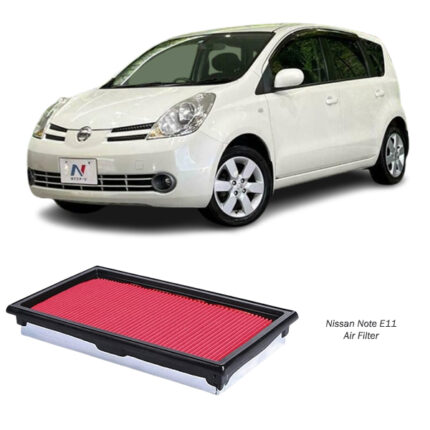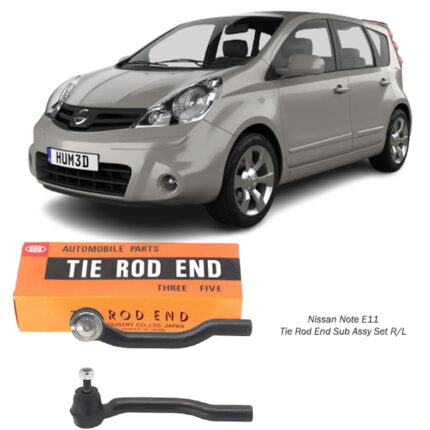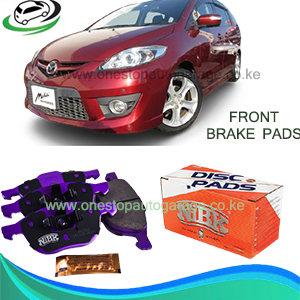-13%
Get Front Brake Pad Mazda Premacy NIBK
Brake pads are crucial components in the braking system of a vehicle. They are friction materials mounted on metal backing plates and are designed to create friction against the brake rotors (or discs) when the brakes are applied. This friction converts the vehicle’s kinetic energy into thermal energy, which slows down and eventually stops the vehicle.
Components of Brake Pads:
- Friction Material: Typically made of materials like organic compounds, semi-metallic materials (including steel fibers), ceramic materials, or a combination thereof. The choice of material affects performance characteristics such as braking efficiency, noise levels, durability, and dust generation.
- Backing Plate: Provides structural support and rigidity to the brake pad, ensuring it maintains its shape and remains securely attached to the brake caliper assembly.
Benefits;
1. Effective Braking Performance:
- Deceleration: Brake pads are essential for converting kinetic energy into thermal energy through friction, allowing vehicles to decelerate and stop efficiently.
- Control: They provide precise control over braking force, enabling smooth modulation of vehicle speed in various driving conditions.
2. Consistency and Reliability:
- Predictable Performance: High-quality brake pads offer consistent braking performance across different temperatures and operating conditions, ensuring reliability when stopping the vehicle.
- Emergency Braking: They are designed to provide quick response and effective stopping power during emergency braking situations, enhancing driver safety.
3. Reduced Noise and Vibration:
- Quiet Operation: Modern brake pads are engineered to minimize noise and vibration during braking, providing a quieter and more comfortable driving experience.
- Smooth Engagement: They offer smooth engagement with the brake rotors, reducing juddering or pulsation felt through the brake pedal.
4. Minimal Dust Generation:
- Cleaner Wheels: Some types of brake pads, such as ceramic pads, produce less brake dust compared to traditional semi-metallic pads. This helps keep wheels cleaner for longer and reduces the frequency of cleaning maintenance.
5. Longevity and Durability:
- Wear Resistance: Premium brake pads are formulated with durable materials and advanced friction compounds that resist wear and maintain performance over extended periods.
- Rotor Compatibility: They are designed to be compatible with various types of brake rotors, including standard rotors and performance-oriented rotors, ensuring optimal braking efficiency and longevity of braking components.
6. Heat Dissipation and Fade Resistance:
- Heat Management: Effective brake pads dissipate heat generated during braking, preventing overheating of the braking system components and reducing the risk of brake fade.
- High Temperature Tolerance: They maintain consistent performance even under high operating temperatures, providing reliable braking power during prolonged or intense braking maneuvers.
7. Environmental Considerations:
- Low Environmental Impact: Some brake pad formulations are engineered to reduce harmful emissions and minimize environmental impact, contributing to cleaner air quality.
8. Application-Specific Designs:
- Performance Enhancement: Specialty brake pads, such as those designed for high-performance vehicles or towing applications, offer enhanced braking capabilities tailored to specific driving needs and conditions.
Signs of worn out Brake pads;
- Squealing or Squeaking Noise:
- High-pitched squealing or squeaking noises when applying the brakes are often the first sign of worn-out brake pads. This noise is typically caused by wear indicators, small metal tabs built into the brake pad that make contact with the rotor when the pad wears down significantly.
- Grinding or Metal-on-Metal Sound:
- A grinding or metallic scraping noise when braking indicates that the brake pads have worn down completely. In this state, the metal backing of the brake pad is rubbing directly against the brake rotor, causing severe damage to both components.
- Reduced Brake Responsiveness:
- If you notice that the brake pedal feels softer or requires more pressure to bring the vehicle to a stop, it could indicate worn brake pads. Reduced responsiveness can compromise braking efficiency and increase stopping distances.
- Vibration or Pulsation in the Brake Pedal:
- Vibrations or pulsations felt through the brake pedal when braking can indicate uneven wear of the brake pads or warped brake rotors. This condition can lead to unstable braking and should be addressed promptly.
- Brake Warning Light:
- Many modern vehicles are equipped with a brake warning light on the dashboard that illuminates when the brake pads are worn down to a specified level. If this light comes on, it’s essential to have your brakes inspected immediately.
- Visual Inspection:
- You can visually inspect the brake pads through the spokes of your wheels. If the pad material appears to be less than 1/4 inch thick, it’s a sign that the pads are nearing the end of their service life and should be replaced soon.
- Uneven Brake Pad Wear:
- Uneven wear patterns on the brake pads can indicate issues such as caliper problems, rotor misalignment, or suspension issues. Addressing these underlying issues is essential to prevent premature brake pad wear and maintain braking performance.
Follow us on Facebook for more parts.



